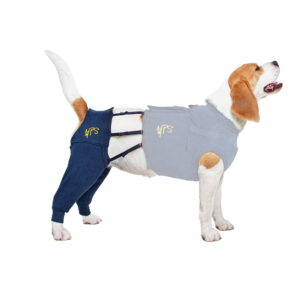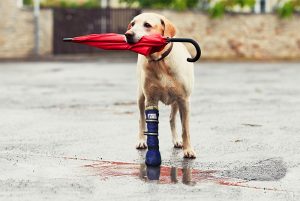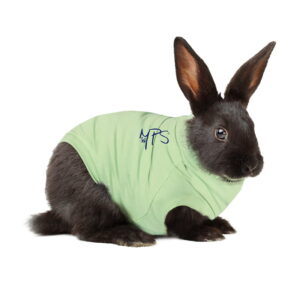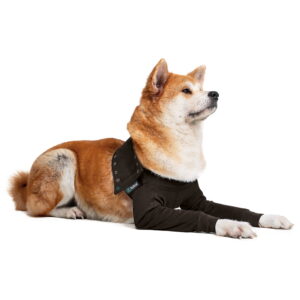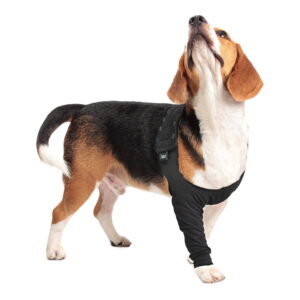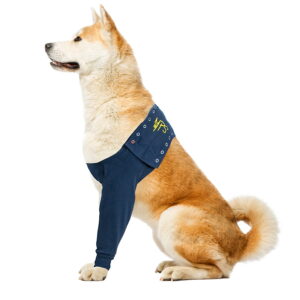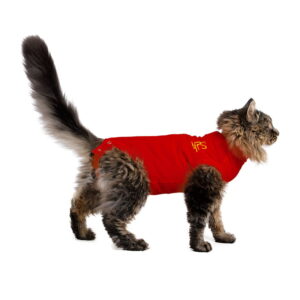Caring for a Cat After Surgery: Complete Post-Op Care Guide
Cat after surgery care can feel overwhelming the first day home. This friendly, vet-aligned post-op guide walks you through incision care, feeding and hydration, litter and hygiene, activity limits, and pain signs—plus practical tips on using a cone or a recovery suit. If you need quick answers or a day-by-day cat recovery timeline, you’re in the right place.
At a glance: Cat recovery timeline
- Day 0–1: Sleepy, wobbly, low appetite. Keep warm, quiet, and wearing a cone or recovery suit. Offer small, soft meals and fresh water.
- Day 2–3: Appetite should improve. Mild redness around the incision is OK. Litter trips resume. Strict rest; no jumping.
- Days 4–7: Swelling should settle. Most spay/neuter cats are brighter but still need activity restriction. Continue cone/suit.
- Days 8–14: Skin incision typically sealed. Vet recheck and stitch removal if applicable. Gradual return to normal activity only after vet clears it.
- Orthopedic/abdominal surgeries: Expect a longer, stricter recovery (often 4–6+ weeks of controlled rest).
—
Why feline recovery feels unique
Cats are famously independent and stoic. They mask pain, prefer minimal fuss, and metabolise medications differently from dogs. That combination makes regular, gentle check-ins essential. Expect your cat to be quieter, seek secluded spots, and want calm over cuddles—your job is to observe, protect the incision, and keep basic routines consistent.
—
How long does a cat incision take to heal?
Short answer: Most skin incisions look sealed in 10–14 days. Deeper or more complex procedures (orthopedic/abdominal) take longer—often several weeks of controlled rest.
What’s normal:
- Mild redness and swelling for 24–48 hours
- A dry, clean incision without gaps
- Clear to slightly straw-coloured seepage in tiny amounts
Red flags (call your vet):
- Increasing redness, heat, or swelling after day 2
- Pus, foul odour, continuous bleeding, or the wound opening
- Your cat persistently licking or chewing the incision despite a cone/suit
Incision care tips:
- Keep it dry; no bathing until your vet says it’s safe
- Don’t apply creams unless instructed
- Check twice daily in good light and note changes
—
What should a cat eat after surgery?
Post-op nausea and pain can blunt appetite for 12–24 hours. Many cats will eat within 24–36 hours.
Help your cat start eating:
- Offer small, frequent meals of a familiar, soft food
- Lightly warm wet food to boost aroma (test temp on your wrist)
- Keep fresh water available; a fountain can encourage drinking
If your cat won’t eat:
- Try hand-feeding a teaspoon at a time
- Add a little tuna water (not brine) for scent
- If still not eating by 24–36 hours—or any vomiting, drooling, or hiding—call your vet. Cats risk hepatic lipidosis after even short periods of fasting.
When syringe feeding is appropriate:
- Only under vet guidance with a safe consistency and correct volume
—
When should my cat pee or poop after surgery?
- Pee: Most cats should urinate within 24 hours. If no urine by then, contact your vet—especially after neutering or bladder procedures.
- Poop: It’s common to skip a day or two after anesthesia and pain meds. If no stool by 48–72 hours, call your vet.
Litter and hygiene:
- Use non-clumping or paper pellet litter for any abdominal/perineal incisions
Switch back to clumping only after the incision is closed and your vet gives the OK
- Provide a low-sided, easy-access box; consider a second box in the recovery room
- If needed, gently wipe the underside with pet wipes to keep the area clean
—
How do I stop my cat licking stitches?
Primary tools:
- Cone (Elizabethan collar/soft e-collar)
- Recovery suit (post-surgical onesie)
When to remove the cone after cat spay/neuter:
- Typically 10–14 days, or until your vet confirms the incision is healed and your cat has stopped trying to lick. Removing it early risks infection or wound breakdown.
Recovery suit vs cone for cats—how to choose:
- Recovery suit: Great for comfort, anxiety-prone cats, and keeping the area clean. Needs correct fit and must stay fully fastened.
Explore: Suitical At Home Recovery
- Soft cone/e-collar: Best for determined lickers or where suits don’t cover the site. Choose a cat-sized soft cone or inflatable that doesn’t block eating/drinking.
Explore: MPS Vet Recovery
Tip: Many cats do best with a suit indoors and a cone at night or when unsupervised.
—
How do I keep my cat from jumping?
- Confine to a small, quiet room; block high perches and stairs
- Use a large crate for orthopedic or abdominal surgeries as directed by your vet
- Provide cosy bedding and a low-entry litter tray
- Feed small, frequent meals; consider an auto feeder to reduce excitement
- Offer gentle enrichment at floor level (snuffle mats, slow feeders, quiet interactive toys)
- Avoid active play until your vet clears activity
—
How to give medicine to a cat after surgery
Safety first:
- Never give human painkillers (paracetamol/acetaminophen or ibuprofen are toxic to cats)
- Follow the exact dose and schedule from your vet
Make it easier:
- Ask for compounded meds (flavoured liquid) or transdermal options where suitable
- Use pill pockets or a small bite of wet food to hide tablets
Keep a simple schedule or use our printable checklist (below)
- Watch for side effects: vomiting, diarrhoea, drooling, profound lethargy—call your vet if seen
Is my cat in pain after surgery?
- Signs include reduced appetite, hiding, squinting, tense body, reluctance to move, and a lowered head posture. If in doubt, call your vet; it’s better to treat pain early.
—
Cat recovery timeline, day by day
Day 0 (homecoming)
- Sleepy/wobbly from anesthesia; keep warm and quiet
- Offer small amounts of water; a teaspoon of food once fully awake
- Cone or recovery suit on at all times
Days 1–3
- Appetite should return; continue small, soft meals
- Mild redness around the incision is normal; no discharge or foul odour
- Strict rest; prevent jumping and roughhousing
Days 4–7
- Energy improves, but the incision is still vulnerable
- Keep using non-clumping/paper litter if the site could contact litter
- Continue cone/suit; most licking happens at night
Days 8–14
- Skin usually sealed; vet recheck and any suture removal
- Gradual return to normal routines only after vet approval
- Switch litter back when your vet confirms it’s safe
Spay/neuter notes
- Female spay recovery timeline: typically 10–14 days of cone/suit and rest
- Male neuter recovery (day by day): often faster surface healing (7–10 days), but still prevent licking/jumping
Dental surgery aftercare
- Feed soft food for several days; avoid hard kibble if extractions were done
- Watch for drooling with blood-tinged saliva in the first 24 hours (often normal); persistent heavy drool or foul odour warrants a call to the vet
Orthopedic/abdominal surgery
- Expect crate rest and a longer plan (4–6+ weeks)
- Follow your surgeon’s instructions precisely; use ramps and strict leash-room movement only
—
When to call the vet
Call immediately if you notice:
- No urination within 24 hours post-op
- No eating by 24–36 hours, or any repeated vomiting
- Increasing redness/swelling after day 2, pus, bad odour, or the incision opening
- Fever (warm ears, lethargy), laboured breathing, severe drooling, profound weakness
- Persistent pain signs despite medication
- Constipation beyond 48–72 hours or straining without results
—
FAQs
Q: How long should a cat wear a cone after surgery? A: Usually 10–14 days, or until your vet confirms healing and your cat is no longer trying to lick. For orthopedic/abdominal surgeries, follow your surgeon’s specific advice.
Q: What are signs of infection in a cat’s incision? A: Growing redness or heat after day 2, swelling, pus, foul odour, continuous bleeding, or the wound edges opening. Call your vet promptly.
Q: What litter is best after cat surgery? A: Non-clumping or paper pellet litter reduces contamination and sticking to wounds. Switch back to clumping only when your vet says it’s safe.
Q: My cat isn’t eating after surgery—what should I do? A: Offer warmed wet food in small amounts, try strong-smelling toppers, and keep things calm. If no eating by 24–36 hours—or any vomiting/drooling—call your vet.
Q: When can my cat jump again after spay/neuter? A: Only after your vet clears it, commonly after the 10–14 day recheck. Earlier jumping risks tearing the incision.
Q: Is drooling after anesthesia normal? A: Mild drooling can be normal on day 0–1. Heavy, persistent drooling—especially with bad breath, pain, or refusal to eat—warrants a vet call.
Q: How do I stop my cat licking stitches without a cone? A: A well-fitted recovery suit is the best alternative. Some cats still need a cone at night or when unsupervised.
—
Final thoughts
Helping your cat recover well is about quiet comfort, consistent routines, and smart prevention: protect the incision, feed little and often, use non-clumping litter, and keep activity low. Watch for subtle pain signs—cats are experts at hiding discomfort—and reach out to your vet when something feels off. With a calm environment and the right gear, most cats heal beautifully.
Disclaimer: This guide offers general, vet-aligned advice and is not a substitute for personalised veterinary care. Always follow your own vet’s instructions for your cat’s specific surgery and health needs.

